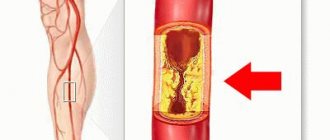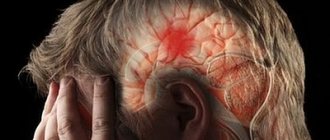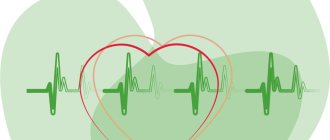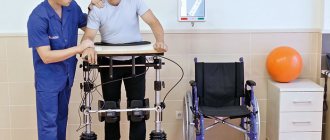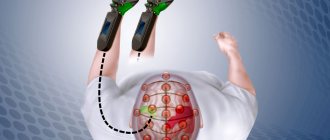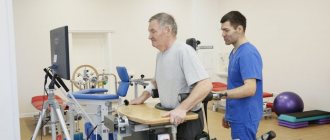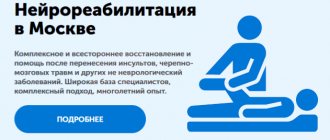Diagnosis of diseases of the central nervous system (CNS) using magnetic resonance imaging makes it possible to identify and differentiate pathological processes in the early stages of development.
A series of MRI images for suspected stroke
An induction field is used to visualize the state of the cerebral substance and cerebral vessels. Under the influence of a directed electromagnetic pulse, the hydrogen atoms in water molecules change position, then returning to their place. The resonance of charged particles is detected using sensitive sensors and processed using complex software algorithms.
Diagnosis of strokes using MRI is an effective way to determine pathological changes in the condition of intracranial vessels and assess the consequences of cerebrovascular accidents. Magnetic resonance imaging of the head is prescribed to clarify the diagnosis if the examination is insufficiently informative and in the case of an initial visit to a specialist. A referral for the procedure can be given by a neurologist, neurosurgeon, oncologist, or traumatologist.
What is a stroke, its types
A stroke is a disorder of cerebral circulation leading to brain damage.
The pathology is widespread. In the Russian Federation alone, there are 3 cases of stroke per 1000 inhabitants. In the post-mortem extract, it is listed as the cause of death in 23.5% of people.
Even if patients do not die after suffering a vascular accident, more than 80% of them remain disabled. Often neurological disorders are so severe that the patient is unable to care for himself. Stroke is the third leading cause of death.
There are 2 types of stroke: ischemic and hemorrhagic. The mechanism of their development and the features of treatment have nothing to do with each other. There is also a special type of hemorrhagic vascular damage - subarachnoid hemorrhage.
Ischemic
Ischemic stroke is a cerebral circulatory disorder accompanied by an acute onset. Pathology develops due to disruption or complete cessation of blood supply to the brain. This leads to softening of its tissues and infarction of the affected area. It is cerebral vascular ischemia that is one of the main causes of death worldwide. Such a stroke occurs 6 times more often than hemorrhagic lesions.
It can be of 2 types:
- Thrombotic . Develops due to blockage of blood vessels in the brain by a blood clot.
- Embolic . Occurs when blood vessels located far from the brain become blocked. The most common source of embolism is the heart muscle (cardioembolic stroke).
In 80% of cases, the pathological focus is localized in the middle cerebral artery. Other vessels account for the remaining 20%.
Reasons that can provoke ischemic damage to cerebral arteries and veins:
- Myocardial infarction.
- High or low blood pressure.
- Atrial fibrillation.
- Diabetes.
- Lipid metabolism disorders.
Risk factors include: old age, hereditary predisposition to vascular accidents, as well as lifestyle features.
Symptoms of ischemic stroke do not increase as quickly as symptoms of hemorrhagic brain damage.
Its manifestations:
- Drowsiness, dazedness.
- Brief fainting.
- Headache, dizziness.
- Nausea and vomiting.
- Pain in the eyes that gets worse with movement.
- Cramps.
- Sweating, hot flashes, dry mouth.
Depending on which part of the brain is affected, the neurological manifestations of ischemia differ. The lower and upper extremities are affected to a greater or lesser extent, paresis of the tongue and face is observed, and visual and/or auditory function deteriorates.
Hemorrhagic
Hemorrhagic stroke is bleeding into the cranial cavity. The most common cause of blood vessel rupture is high blood pressure.
Other provoking factors include:
- Aneurysm.
- Malformation of cerebral vessels.
- Vasculitis.
- Systemic connective tissue diseases.
- Taking certain medications.
- Amyloid angiopathy.
The onset of the pathology is acute; most often the manifestation occurs against the background of high blood pressure. A person experiences severe headaches, dizziness, accompanied by vomiting or nausea. This state is quickly replaced by stupor, loss of consciousness, and even the development of coma. Convulsions are possible.
Neurological symptoms manifest themselves in the form of memory loss, deterioration of sensitivity and speech function. One side of the body, which is on the opposite side of the lesion, loses the ability to function normally. This applies not only to the muscles of the torso, but also to the face.
A stroke with blood escaping into the ventricles of the brain is difficult to endure. The victim develops symptoms of meningitis and has seizures. He quickly loses consciousness.
The next 3 weeks after a stroke are considered the most difficult. At this time, cerebral edema progresses. It is he who is the main cause of death of patients. Starting from the fourth week, in surviving people, the symptoms of the lesion begin to reverse. From this time on, the severity of brain damage can be assessed. They are used to determine what degree of disability to assign to the victim.
Subarachnoid hemorrhage
Subarachnoid hemorrhage is understood as a condition that develops as a result of a breakthrough of blood vessels into the subarachnoid space of the brain. This pathology is a type of hemorrhagic stroke.
The subarachnoid space contains cerebrospinal fluid, the volume of which increases due to blood flow. The patient's intracranial pressure increases and meningitis of aseptic nature develops. The situation is aggravated by the reaction of cerebral vessels. They spasm, which leads to ischemia of the affected areas. The patient develops an ischemic stroke or transient ischemic attack.
The following reasons lead to hemorrhage into the subarachnoid space::
- Traumatic brain injuries with damage to the integrity of blood vessels.
- Aneurysm rupture.
- Dissection of the carotid or vertebral artery.
- Myxoma of the heart.
- A brain tumor.
- Amyloidosis.
- Diseases associated with blood clotting disorders.
- Uncontrolled use of anticoagulants.
The pathology manifests itself as a severe headache. Possible loss of consciousness. In parallel, symptoms of meningitis develop, with neck stiffness, vomiting, and photophobia. A distinctive sign is an increase in body temperature. In severe cases, there is a disorder of respiratory function and cardiac activity. With prolonged fainting and coma, one may suspect that blood has entered the ventricles of the brain. This occurs during its massive outpouring and threatens with serious consequences.
Neuroimaging of stroke
CT scan
A CT scan of the brain must be performed in the first hours after the onset of stroke to exclude intracranial hemorrhage (Figure 1), the presence of which is an absolute contraindication to thrombolytic therapy.
Figure 1. CT scan of the brain in a patient with hemorrhagic stroke
According to modern recommendations, native CT should be performed within the first 20 minutes after the patient’s arrival at the hospital (the “golden hour” rule is outlined in the “Specific Therapy” section). The absence of changes in the most acute period according to brain CT data only indicates that a hemorrhagic type of stroke has been excluded.
The dynamics of the ischemic focus when performing a CT scan of the brain during the first 48 hours from the development of symptoms is presented in Figures 2a, 2b.
Figure 2a. CT scan of the brain of a patient with ischemic stroke 3 hours after the onset of stroke (no changes in brain tissue)
Figure 2b. CT scan of the same patient’s brain 48 hours after the onset of stroke (extensive hypodense focus with displacement of the midline structures, indicating an ischemic type of stroke)
However, there are early CT signs of ischemic stroke. These include:
- A decrease in the X-ray density of one third or more of the middle cerebral artery area.
- Hypodensity of the basal ganglia.
- Smoothness of cortical grooves.
- Loss of gray/white matter demarcation along the insular region (insular band sign), disappearance of the Sylvian fissure.
- Increased CT signal from the middle cerebral artery and other arteries (sign “or “point symptom”).
- Loss of differentiation of gray and white matter in the subcortical region (Figure 3b).
Figure 3a. CT scan of the brain of a patient with ischemic stroke in the acute period of stroke. The arrow indicates the hyperdense right middle cerebral artery
Figure 3b. CT scan of the brain of a patient with ischemic stroke 5 hours after the onset of stroke. The arrow indicates the area of decreased differentiation into white and gray matter in the right hemisphere. In this zone, the spaces between the gyrus are somewhat erased
The presence of early CT signs of cerebral ischemic damage indicates extensive damage to the brain tissue and is associated with unfavorable functional outcomes.
Assessment of the extent of cerebral infarction
The prevalence of ischemic damage to the brain substance in the MCA region can be assessed using the ASPECTS scale. The MCA basin is divided into ten regions that are assessed on axial CT slices: the caudate nucleus, insula, lenticular nucleus, internal capsule, and six other cortical regions (“M1”–“M6”) (Figure 4). The score is calculated by subtracting 1 point from 10 for identifying ischemic hypodensity in each area. Thus, in the case of an intact MCA basin, a score of “10” will be given, and in case of complete involvement of the MCA basin in the area of infarction, a score of “0” will be given.
Figure 4. ASPECTS scale
Perfusion computed tomography
The method is based on changes in the X-ray density of tissue during the passage of an intravenously administered contrast agent (CM). With perfusion CT (PCT), the passage of CV through the cerebral capillary network is monitored on a series of CT slices. Based on the data on the change in the X-ray density of image elements as the HF passes through, a graph of the density (i.e., change in the HF concentration in any element of the slice) versus time (time-density curve, TDC) is constructed. Scanning is usually performed at the level of the deep structures of the brain and basal ganglia, capturing the supratentorial areas supplied by the anterior, middle and posterior cerebral arteries. The following parameters are analyzed:
Cerebral blood volume (CBV) is the total volume of blood in a selected area of brain tissue. This concept includes blood both in capillaries and in larger vessels - arteries, arterioles, venules and veins. This indicator is measured in milliliters of blood per 100 g of brain matter (ml/100 g);
Cerebral blood flow (CBF) is the rate at which a given volume of blood passes through a given volume of brain tissue per unit time. CBF is measured in milliliters of blood per 100 g of brain matter per minute (ml/100 g x min);
Mean transit time (MTT) is the average time it takes blood to pass through the vascular bed of a selected area of brain tissue, measured in seconds (s). According to the central volume principle, these parameters are related by the relation CBV = CBF x MTT.
When performing PCT, cerebral perfusion is assessed using maps constructed for each of the parameters, as well as their absolute and relative values in the corresponding areas of the brain. In addition to CBF, CBV and MTT, time to peak (TTP) can also be calculated. The researcher can select several regions of interest (ROI, region of interest) on the slice, for which the average values of cerebral perfusion indicators are calculated and a time-density graph is constructed.
Normal values of perfusion parameters of the GM substance are presented in Table 1.
Table 1. Normal values of perfusion parameters of gray and white matter of the brain according to PCT data
| Region | CBF, ml/100g x min | CBV, ml/100g | MTT, s |
| Gray matter | 60 | 4 | 4 |
| White matter | 25 | 2 | 4,8 |
When the blood supply to the brain is impaired, the ratio of perfusion parameters naturally changes, Table 2.
Table 2. Changes in perfusion parameters at various stages of disruption of cerebral blood supply to brain tissue
| Stage | CPD | CBF | CBV | MTT |
| Preserved autoregulation | ↓ | N | ↑ | ↑ |
| Oligemia | ↓↓ | ↓ | ↑ | ↑ |
| Penumbra | ↓↓↓ | ↓↓ | ↑/N | ↑↑ |
| Irreversible damage (infarction core) | ↓↓↓↓ | ↓↓↓ | ↓ | ↑↑ |
N-normal values, ↓ - decrease, ↑ - increase
A slight decrease in cerebral perfusion pressure (CPP) leads to compensatory dilation of cerebral arterioles and a decrease in vascular resistance. Accordingly, the CBF value measured using PCT in this situation will remain normal, but MTT and CBV will be elevated. In the case of a moderate decrease in CPP, vasodilation ensures that blood flow is maintained at the limit of compensatory capabilities. A sign of this is an even greater lengthening of MTT and an increase in CBV. With a further decrease in CPP, the autoregulatory mechanisms cease to function, the expansion of cerebral vessels is no longer able to provide sufficient perfusion, which leads to a decrease in both CBF and CBV. The more pronounced the decrease in blood flow, the less time it takes for irreversible changes to develop. As a rule, the infarction zone is surrounded by potentially viable tissue under ischemic conditions - the penumbra. An “instrumentally identified penumbra” is a tissue area in which there is a difference between the area of zones with altered CBV and CBF. In this case, the zone in which CBV and CBF are reduced represents the infarct core, and the zone with reduced CBF and normal CBV (the so-called CBF–CBV discrepancy) is a tissue area surrounding the infarct core with reduced perfusion and impaired functioning, but still maintaining viability.
In the case of severe ischemic injury, the zones of altered CBV and CBF practically coincide, which indicates irreversible damage to brain tissue and no need for emergency reperfusion. The duration of the existence of the ischemic penumbra depends both on the time elapsed from the moment of disruption of the blood supply to the brain tissue, and on the individual characteristics of the patient. In the first 3 hours from the onset of the disease, penumbra is detected in 90–100% of patients, but in 75–80% of cases it is detected within the first 6 hours. This indicates that the use of CT perfusion to verify the penumbra zone is advisable for selecting patients who are indicated for thrombolytic therapy, regardless of the time that has passed since the development of IS. PCT (CT) data of a patient with preserved penumbra in the acute period of ischemic stroke before and after thrombolytic therapy are presented in Figures 5a and 5b.
Figure 5a. Perfusion CT of the brain of a patient in the acute period of ischemic stroke (before thrombolysis). The arrow indicates the penubra zone
Figure 5b. Native CT scan of the brain in a patient with ischemic stroke 24 hours after thrombolytic therapy
It must be emphasized that identifying areas of potentially viable and irreversibly damaged tissue during the formation of an ischemic focus using PCT should be based not only on determining cerebral blood flow (CBF), but also on assessing the relationship between blood flow, blood volume and the duration of blood passage in the damaged area, that is, all recorded perfusion parameters.
Magnetic resonance imaging
MRI is a more sensitive tool for verifying acute focal ischemic damage to the brain than CT. Brain MRI protocols include T1 and T2 sequences, FLAIR, diffusion-weighted imaging (DWI) with measured diffusion coefficient (ADC), and perfusion-weighted imaging (PWI). To exclude intracerebral microhemorrhages, it is preferable to include T2* - (a mode that allows identifying small, hidden hemorrhages by visualizing hemosiderin deposits) or SWI - (magnetic susceptibility-weighted image) sequences in the protocol. Brain MRI data are presented in Figures 6a and 6b.
Figure 6. MRI of the brain in T2 Flair (a) and T2 (b) modes in a patient with ischemic stroke on the 3rd day after the onset of stroke. The arrow indicates a large area of ischemic changes in the right temporo-fronto-parietal region, in the head of the caudate nucleus, internal capsule on the right with deformation of the right lateral ventricle, displacement of the middle structures by 6 mm
However, the high cost of MR diagnostics, lower availability of equipment compared to CT, limitations in patients in critical conditions and with psychomotor agitation, and the impossibility of performing in patients with metal structures in the body, limit the use of this method. Contraindications to this diagnostic procedure are divided into absolute and relative.
Relative contraindications to MRI are:
- pregnancy (first trimester);
- insulin pumps;
- artificial heart valves;
- hemostatic clips;
- nervous system stimulants;
- claustrophobia (during examination in tunnel tomographs);
- tattoos on the body made with metal-containing dyes.
Absolute contraindications to MRI:
- presence of an MR-incompatible pacemaker;
- installed Ilizarov apparatus;
- large metal implants, ferromagnetic fragments;
- middle ear implant;
- intracranial hemostatic clips made of metal.
Routine use of brain MRI in all patients with acute ischemic stroke is not cost-effective and is not recommended for initial diagnosis or before deciding further treatment.
Diffusion-weighted magnetic resonance imaging
This method is based on the ability of MRI to detect a signal associated with the movement of water molecules (Brownian motion) under the influence of two pulse sequences that are close in frequency, which makes it possible to verify changes caused by ischemia within 3 to 30 minutes after their development, when the results of conventional MRI studies and CT scans of the brain may remain normal. Acute cerebral ischemia leads to membrane depolarization, changes in membrane permeability, changes in ion exchange and water entry into cells. Cell swelling entails compression of the extracellular space, limitation of the diffusion of extracellular water and, possibly, limitation of the diffusion of intracellular water due to changes in organelles. These changes result in increased DWI signal (Figure 7) and low measured diffusion coefficient (ADC) values. The measured diffusion coefficient (Apparent Diffusion Coefficient - ADC) is a quantitative characteristic of diffusion processes in tissues. This is the average value of complex diffusion processes occurring in biological structures, that is, a quantitative characteristic of water diffusion in the intracellular and extracellular spaces, taking into account various sources of intravoxel uncoordinated and multidirectional movements, such as intravascular blood flow in small vessels, movement of cerebrospinal fluid in the ventricles and subarachnoid spaces, etc. etc. The limits of ADC indicators are normally known; in adults they range from 0.590×10-3mm2/s to 0.950×10-3 mm2/s.
Subsequent lysis, cell shrinkage, and tissue rarefaction lead to an increase in extracellular space and water content with a simultaneous decrease in DWI signal intensity and an increase in ADC values. Diffusion-weighted MRI brain data are presented in Figure 7.
Figure 7. MRI of the brain in DWI - (a) and ADC - (b) modes. The arrow indicates the area of ischemic changes in the right hemisphere of the brain
The diffusion limitation of the infarcted area is transient and lasts one to two weeks. Subsequently, it ceases to be observed, passing through a phase of pseudo-normalization. Infarction in the chronic phase is not brightly colored on DWI.
DWI MRI has high sensitivity and specificity in diagnosing ischemic stroke, however, studies have shown that small ischemic lesions in the brainstem may remain undetected when using this technique. It should be remembered that multimodal CT and MRI of the brain, including perfusion imaging, should not cause a delay in systemic thrombolysis.
Perfusion-weighted magnetic resonance imaging
The main purpose of perfusion-weighted (PWI) MRI is to assess cerebral hemodynamics. The most common technique for performing the procedure is bolus contrast tracking. Imaging is performed by monitoring the passage of a contrast agent (gadolinium) through brain tissue. The signal intensity decreases as the contrast passes through the infarction area and returns to normal when it leaves the area. Based on indicators such as CBF (cerebral blood flow), CBV (cerebral blood volume, MTT (mean transit time), TTP (time to reach the maximum (peak) concentration of the contrast agent, time to peak) perfusion maps are compiled (the characteristics of these indicators are covered in detail earlier in the section “Perfusion computed tomography”). Also used in clinical practice is the Arterial spin labeling (ASL) technique, which does not require the introduction of a contrast agent, as an endogenous The contrast agent uses water in the arterial blood. Typically, magnetic tags are applied to the arterial spins using an inversion-recovery sequence. The section under study is then subjected to saturation (saturation), as a result of which incoming unsaturated spins contribute to amplification of the signal relative to the saturated tissue in the final section. Labeled arterial spins emerging from the vascular bed into the extracellular space cause an increase in the signal in the corresponding region. (Stangevsky A. A. Tyutin L. A. The role of perfusion technologies in assessing the hemodynamics of brain tumors. Translational Medicine. 2015; 2(4): 41–47.)
It has been proven that the combined use of DWI and PWI modes improves the quality of visualization, allowing one to obtain the most complete information about the location and extent of the lesion in the first 48 hours from the onset of stroke symptoms. In addition, the identification of diffusion-perfusion mismatch, which is the difference between the areas covered by DWI and PWI, is diagnostically significant; this difference, as a rule, corresponds to the penumbra, the “ischemic penumbra” zone. The disadvantages of diffusion-perfusion mismatch are mostly methodological and include the following:
- Insufficient anatomical correspondence between DWI and PWI zones
- Different PWI sensitivity depending on Tmax (time to peak of residual curve)
- Nonconformity assessment is carried out visually
Blood Oxygen Level-Dependent (BOLD) MRI
Oxygen extraction fraction (OEF), measured by positron emission tomography (PET), is considered the standard criterion for imaging the ischemic penumbra in acute ischemic stroke. Before the advent of this technique, assessment of diffusion-perfusion mismatch was the only MRI method for visualizing the ischemic penumbra region. BOLD MRI is a technique that detects deoxyhemoglobin in cerebral capillaries and veins and uses it as an indicator of cerebral oxygen extraction fraction.
MRI picture at different periods of acute stroke
Period 0–24 hours from onset of symptoms
When performing MRI in DWI mode, ischemic changes can be detected within a few minutes from the onset of symptoms.
A few hours after the onset of stroke (best seen on T2-weighted images), a loss of MR signal from the passage of blood through the vessels is observed (in 30–40% of patients). After 2–4 hours, T1 mode shows smoothing of the grooves due to cytotoxic edema. After 8 hours, T1-weighted images show increased signal intensity due to cytotoxic and vasogenic edema. On contrast-enhanced MRI, an increase in the MR signal of blood flow through the vessels may occur early (in > 50% of patients) due to slow blood flow in the area of necrosis; this sign most often disappears after 1 week. There are differences in the intensity of the MR signal from the brain substance in formed and unformed infarcts. With established infarctions, it is visualized 5–7 days after the development of stroke symptoms and persists for several months. With unformed infarctions, it can be observed for 2–4 hours and is usually more intense than with a mature infarction.
Table 3 shows changes on MRI at different periods of acute stroke.
Table 3. Ischemic changes on MRI depending on the time after the development of symptoms
| Time | MRI picture | Etiology |
| 2–3 minutes | DWI – reduction of ADC coefficient | Reducing the speed of protons |
| 2–3 minutes | PWI - Decrease in CBF, CBV, MTT | Decreased cerebral blood flow velocity |
| 0–2 hours | T2-WI – no flow effect (flow void) | Slow blood flow or occlusion |
| 0–2 hours | T1-WI – arterial enhancement | Slowing blood flow |
| 2–4 hours | T1-WI – light smoothing of furrows | Cytotoxic edema |
| 2–4 hours | T1-WI – parenchymal enhancement | Unformed heart attack |
| 8 ocloc'k | T2-WI – signal hyperintensity | Vasogenic and cytotoxic edema |
| 16–24 hours | T2-WI – signal hypointensity | Vasogenic and cytotoxic edema |
| 5–7 days | Increased signal intensity from brain matter | Formed heart attack |
Period 1–7 days from the onset of symptoms
Since swelling reaches its maximum within 24–48 hours, areas of pathological lesions on MRI are clearly demarcated. The ischemic zone is hypodense in T1-WI mode and hyperdense in T2-WI; a mass effect is also observed in this zone. When contrast is used, an increase in the intensity of the signal of blood passing through the vessels is observed, while the MR signal of the brain substance acquires increased intensity at the end of this period.
Period 7–21 days from the onset of symptoms
During this period, the edema disappears and the mass effect becomes less pronounced, and the stroke zone is hypodense in T1-WI mode and hyperdense in T2-WI. Contrast-enhanced images show increased intensity of the MR signal of blood passing through the vessels, as well as the substance of the brain. An increase in the signal is also observed in the area of the convolutions of the cerebral cortex; the subcortical structures are homogeneous.
More than 21 days from the onset of symptoms
During this period, the edema disappears completely, hypodensity in T1-WI mode and hyperdensity in T2-WI in the stroke zone remain. Due to a decrease in the volume of brain tissue due to the infarction zone, an ex-vacuo enlargement of the ventricles occurs, as well as an expansion of the convolutions and grooves of the cerebral cortex.
On contrast-enhanced images, a characteristic feature is an increase in signal intensity from the brain substance, which is usually no longer observed after 3-4 months.
Neuroimaging (MRI) of various pathogenetic subtypes of cerebral infarction
Lacunar infarction is a small lesion (less than 1.5 cm) located in the deep parts of the brain (Figure 8). The cause of the development of lacunar infarction is most often lipohyalinosis and fibrinoid necrosis due to arterial hypertension. The most common localization of the lesion is the basal ganglia, internal capsule, thalamus, brain stem, cerebellum.
Figure 8. Lacunar stroke (post-ischemic focus in the basal ganglia on the right). Brain MRI in FLAIR mode
PRES ( Posterior reversible encephalopathy syndrome ) is a syndrome of reversible posterior encephalopathy. Clinical manifestations: acute/subacute onset of headache, seizures, visual hallucinations, changes in mental status, sometimes focal neurological symptoms. MRI usually visualizes symmetrical, delimited zones of vasogenic edema, mainly in the areas of blood supply to the vertebrobasilar region. Typically the changes involve the white matter, but the cerebral cortex may also be involved (Figure 9). When using the diffusion-weighted regimen, the ADC coefficient is usually normal or elevated, which allows us to differentiate vasogenic edema caused by hypertension from cytotoxic edema caused by ischemia.
Figure 9. Posterior reversible encephalopathy (PRES syndrome). Vasogenic edema in the parieto-occipital lobes
Thromboembolic infarction is the most common pathogenic subtype. Typically, MRI shows a wedge-shaped infarct in the corresponding area of the blood supply (Figure 10). To identify the lesion, T1 and T2 modes and DWI are used.
Figure 10. MRI of the brain in DWI mode. The arrow indicates the area of ischemic changes in the right hemisphere of the brain
Infarction in the watershed region is localized in adjacent areas of certain territories of the arterial blood supply. The lesion can be located both superficially and deeply in the brain parenchyma. Etiological factors may include systemic hypotension, respiratory and cardiac arrest, proximal arterial severe stenosis or occlusion. Research suggests that this type of infarction may be most easily detected using DWI (Figure 11).
Figure 11. MRI of the brain in DWI mode. Cerebral infarction at the junction of the anterior and middle cerebral arteries.
Occlusion of the cerebral veins and venous sinuses is usually caused by both systemic conditions such as pregnancy, vasculitis, inflammatory diseases, hypercoagulable status, and local conditions such as infection, neoplasia, trauma. Occlusion of the venous structure leads to the impossibility of venous outflow, which results in parenchymal infarctions and hemorrhages.
Typically, such patients are hospitalized at the end of the acute phase or in the subacute phase, which significantly complicates the diagnosis. On MRI, one can note the loss of the venous circulation signal, the absence of normal venous expansion, and the visualization of a hyperintense signal on T1- and T2-weighted images (Figures 12a, 12b). The picture is usually bilateral and does not cover the territory of the arterial blood supply.
Figure 12a. MRI of the brain: sagittal sinus thrombosis.
Figure 12b. MRI of the brain: signs of sagittal sinus thrombosis with the development of venous infarction of the left parietal lobe
Signs and symptoms of stroke
A stroke manifests unexpectedly for a person, although sometimes it is preceded by certain symptoms. If you interpret them correctly, you can avoid a terrible vascular catastrophe.
Warning signs of an impending stroke include:
- Prolonged headaches. They do not have a clear localization. It is not possible to cope with them with the help of analgesics.
- Dizziness. It occurs at rest and can intensify when performing any actions.
- Ringing in the ears.
- Sudden attack of atrial fibrillation.
- Difficulty swallowing food.
- Memory impairment.
- Numbness of arms and legs.
- Loss of coordination.
- Insomnia.
- Increased fatigue.
- Decreased overall performance.
- Rapid heartbeat and constant thirst.
The listed signs may have varying intensities. You should not ignore them; you should consult a doctor.
Symptoms of ischemic stroke increase slowly. With hemorrhagic brain damage, the clinical picture unfolds rapidly.
You can suspect a brain catastrophe based on the following symptoms::
- General cerebral symptoms . The patient experiences unbearable headaches. Nausea ends with vomiting. Consciousness is impaired, and both stupefaction and coma may occur.
- Focal symptoms . They directly depend on where exactly the lesion is localized. The patient may have decreased or completely lost muscle strength on one side of the body. Half of the face is paralyzed, causing it to become distorted. The corner of the mouth lowers, the nasolabial fold smoothes out. On the same side, the sensitivity of the arms and legs decreases. The victim’s speech deteriorates and he has difficulty oriented in space.
- Epileptiform symptoms . Sometimes a stroke provokes an epileptic attack. The patient loses consciousness, has convulsions, and foam appears at the mouth. The pupil does not react to the light beam; on the side of the lesion it is dilated. The eyes move right and left.
- Other symptoms . The patient's breathing quickens and the depth of inspiration decreases. A significant decrease in blood pressure and increased heart rate are possible. Often a stroke is accompanied by uncontrolled urination and defecation.
When the first signs of a stroke appear, you should not hesitate to call an ambulance.
Signs of stroke on MRI
Using magnetic resonance imaging, acute cerebrovascular accident can be detected after the first clinical symptoms appear.
A stroke on MRI of the brain has the following characteristic signs:
- thrombosis, embolism, blood vessel aneurysm;
- cerebral edema;
- necrosis of the cerebral substance (hyperintense lesion on T2-weighted images);
- displacement of the affected brain structures towards healthy tissue;
- formation of liquefaction cysts.
In the acute period (first 6 hours), diffusion-weighted (DW) MRI is performed. The resulting images reflect pathological changes in the brain matter 5 minutes after the onset of signs of stroke. DWI images help determine the area of the lesion, show swelling of the tissue around the lesion, and displacement of cerebral structures.
The acute period (1-7 days) is characterized by the appearance of clearly limited bright areas on MRI in T2-weighted mode. On T1WI, foci of necrosis have a hypointense signal.
Brain on MRI with different scanning modes
Over the next two weeks, the area of edema in the photographs decreases, and the affected area is clearly visible. The early rehabilitation period is characterized by the appearance of a cyst formed in place of necrotic tissue. Later, the formation of alternative neural connections is observed, which allows the restoration of lost brain functions.
Differential signs of stroke on MRI make it possible to clarify the nature of the disease in the first hours, when the use of thrombolysis and regeneration of areas affected by ischemia are possible.
Diagnostic methods
It is important to quickly distinguish a stroke from other diseases that can lead to the development of similar symptoms. It is almost impossible to do this on your own, as well as to determine the type of vascular accident.
The main difference between an ischemic stroke is a gradual increase in symptoms that do not lead to loss of consciousness. With hemorrhagic hemorrhage, the patient passes out quickly. However, stroke does not always have a classic course. The disease may begin and progress atypically.
Diagnosis begins with examination of the patient. The doctor collects anamnesis and determines the presence of chronic diseases. Most often, you can get information not from the victim himself, but from his relatives. The doctor performs an ECG, determines the heart rate, takes a blood test, and measures blood pressure.
It is possible to make the correct diagnosis and obtain maximum information about the patient’s condition thanks to instrumental diagnostic methods. The best option is a CT scan of the brain. Performing an MRI is difficult because the procedure takes a long time. It takes about an hour. It is impossible to spend this amount of time diagnosing an acute stroke.
Computed tomography allows you to clarify the type of pathology, where it is concentrated, to understand how badly the brain is damaged, whether the ventricles are affected, etc. The main problem is that it is not always possible to perform a CT scan in the shortest possible time. In this case, doctors have to focus on the symptoms of the disease.
To determine the source of the stroke, the method of diffusion-weighted tomography (DWI) is used. The information will be received within a few minutes.
Other examination methods include:
- Lumbar puncture.
- Cerebral angiography.
- Magnetic resonance angiography. It is performed without the introduction of a contrast agent.
- Doppler ultrasound.
Once the diagnosis is made, the doctor will immediately begin treatment.
What does an MRI show after a stroke?
Tomograms visualize the state of intracranial vessels, white and gray cerebral matter, and cerebral cortex. The pathogenesis of the disease determines what an MRI shows for a stroke of one type or another.
As a result of scanning, the doctor receives photographs of thin sections of the scanned area; the layer thickness is from 1 mm. Layer-by-layer images show the area under study in three mutually perpendicular projections (lateral, central, transverse). If it is necessary to clarify the location of cerebral structures and determine the interaction of the pathological focus and healthy tissue, a 3D model of the brain is built.
Intracerebral hemorrhage on MRI
In the acute period, magnetic resonance imaging helps to identify the causes of stroke. Based on tomograms, the doctor evaluates the nature of the blood supply to the brain, the condition of the walls, tone, and lumen of the intracranial arteries.
With the development of a focus of necrosis, the location, size, and degree of damage to the cerebral substance are determined.
MRI after a stroke is prescribed during the rehabilitation period. The examination helps to monitor the processes of restoration of damaged areas and timely diagnose the development of long-term consequences.
Who is at risk
There are people who need to be especially wary of developing a stroke, as they are at risk.
Among them:
- Persons with hypertension.
- Patients with diabetes.
- Men and women over 65 years of age.
- People with abdominal obesity.
- Persons with a hereditary predisposition to vascular pathologies.
- Patients who have previously had a stroke or heart attack.
- Patients with diagnosed atherosclerosis.
- Women over 35 years of age taking oral contraceptives.
- Smokers.
- People suffering from heart rhythm disturbances.
- People with high cholesterol levels.
Most often, patients with the listed diagnoses are registered at the dispensary. Special mention should be made of people living in a state of chronic stress. Emotional stress negatively affects all systems of the body and can cause a stroke.
How to provide first aid for a stroke
There is a clear algorithm for providing first aid to a person suffering from a stroke :
- Call a medical team . To do this, you need to dial 103 from a landline phone. If you happen to have a smartphone at hand, then the call is made to the single number 112. The doctor must immediately be informed that the person is unwell and there is a suspicion of a stroke.
- The victim must be laid on a flat surface so that his head is higher than his body. They take off his glasses and remove his lenses. If possible, you need to help him get removable dentures.
- If there is no consciousness, then you need to open the patient’s mouth slightly and turn his head to the side . This is done to prevent aspiration of vomit. It is imperative to listen to the patient’s breathing.
- For better access to fresh air, it is recommended to open a window or vent..
- Before the arrival of the medical team, it is necessary to prepare documents, if any..
Doctors need to be informed about the person’s illnesses, as well as what medications he is taking. It is prohibited to give the victim any medications. Medication correction should be carried out by emergency physicians. You should not try to give water or food to a person. This may make the situation worse.
If the patient falls and has an epileptic attack, there is no need to unclench his teeth or try to hold him. It is necessary to protect the victim from injury. To do this, place a soft object, such as a pillow, under his head. If a stroke with an epileptic attack happened on the street, then you can use a jacket or other suitable thing. Foam flowing from the mouth is wiped away with a cloth. The head should be elevated at all times.
There is no need to try to bring a person to his senses with ammonia. Until the end of the attack, it should not be moved from place to place.
If breathing stops, resuscitation measures must be started immediately. To do this, perform a heart massage and breathe mouth to mouth or mouth to nose.
Treatment and rehabilitation
The patient receives treatment in a hospital. All patients with suspected stroke are hospitalized on an emergency basis. The optimal period for providing medical care is the first 3 hours after a brain accident has occurred. The person is placed in the intensive care unit of a neurological hospital. After the acute period has been overcome, he is transferred to the early rehabilitation unit.
Until the diagnosis is established, basic therapy is carried out. The patient’s blood pressure is adjusted, the heart rate is normalized, and the required blood pH level is maintained. To reduce cerebral edema, diuretics and corticosteroids are prescribed. Craniotomy is possible to reduce the degree of compression. If necessary, the patient is connected to an artificial respiration apparatus.
Be sure to direct efforts to eliminate the symptoms of stroke and alleviate the patient’s condition. He is prescribed medications to lower body temperature, anticonvulsants, and antiemetics. Medicines that have a neuroprotective effect are used.
Pathogenetic therapy is based on the type of stroke. In case of ischemic brain damage, it is necessary to restore nutrition to the affected area as quickly as possible. To do this, the patient is prescribed drugs that resolve blood clots. It is possible to remove them mechanically. When thrombolysis fails, the patient is prescribed Acetylsalicylic acid and vasoactive drugs.
In case of a stroke, it is extremely important to provide timely treatment to the damaged areas of the brain. A course of use of the drug accelerates the process of recovery of brain cells after a stroke, even in cases of impaired blood circulation or hypoxia. This allows for rapid restoration of memory, thinking, speech, swallowing reflex and restoration of other functions of daily activities. Gliatilin has a positive effect on the transmission of nerve impulses, protects brain cells from repeated damage, which prevents the risk of recurrent stroke.
The drug is well tolerated by patients; it is contraindicated for use by pregnant, lactating women and people with hypersensitivity to choline alfoscerate.
Courses will need to be taken regularly. You definitely need to do physical therapy, undergo physical therapy, and visit a massage therapist. After a stroke, many patients have to restore motor skills over a long period of time and learn to care for themselves independently.
Relatives and friends should provide support to the patient and not leave him alone with the problem. Psychologists are involved in the work. Sessions with a speech therapist are often required.
Is it possible to do an MRI after a stroke?
Magnetic resonance imaging does not have a negative impact on the patient's health. If you suspect the development of necrosis of brain tissue, a scan will help determine the nature and intensity of the pathological process.
Signs of acute cerebrovascular accident on MRI
The disease must be differentiated from lesions of cerebral structures caused by:
- poisoning;
- hypoglycemia;
- growth of tumors;
- epilepsy attack, etc.
MRI for cerebral stroke is highly effective during the recovery period. In the acute period, scanning is used if an ischemic lesion is suspected, characterized by the patient's disorientation without loss of consciousness and the absence of severe headache. MRI allows you to clarify the localization of the pathological focus and study in detail the damaged areas of the brain.
Possible consequences, complications
The main danger of a stroke is death. If a person survives, the disease will still make itself felt with certain complications.
Early consequences include:
- Brain swelling.
- Coma.
- Pneumonia.
- Paralysis. It can be partial or complete. Most often, one half of the body is affected.
- Repeated stroke.
- Bedsores.
- Mental disorders. They can manifest themselves in moodiness, irritability, aggression, and anxiety. Sometimes dementia develops.
- Sleep disorders.
- Myocardial infarction, gastric ulcer. These disorders develop against the background of increased levels of stress hormones.
After an ischemic stroke, death occurs in 15-25% of cases. Hemorrhagic damage to the blood vessels of the brain leads to the death of 50-60% of patients. The cause of death is precisely severe complications, for example, pneumonia or acute heart failure. The first 3 months after a stroke are considered the most dangerous.
Arms recover worse in patients than legs. A person's future health is determined by the severity of brain damage, the speed of medical care, his age and the presence of chronic diseases.
Long-term consequences include:
- Formation of blood clots in various parts of the body.
- Depression.
- Speech problems.
- Memory loss.
- Deterioration of intellectual abilities.
After a stroke, you have to deal with the consequences for many months. Sometimes a person never manages to fully recover. For rehabilitation to be as successful as possible, you must strictly follow all the doctor’s instructions.
Stroke is a serious pathology because it affects the brain. Therefore, even the slightest suspicion of a developing vascular accident is a reason to urgently seek medical help.
Diagnostic methods
It is important to quickly distinguish a stroke from other diseases that can lead to the development of similar symptoms. It is almost impossible to do this on your own, as well as to determine the type of vascular accident.
The main difference between an ischemic stroke is a gradual increase in symptoms that do not lead to loss of consciousness. With hemorrhagic hemorrhage, the patient passes out quickly. However, stroke does not always have a classic course. The disease may begin and progress atypically.
Diagnosis begins with examination of the patient. The doctor collects anamnesis and determines the presence of chronic diseases. Most often, you can get information not from the victim himself, but from his relatives. The doctor performs an ECG, determines the heart rate, takes a blood test, and measures blood pressure.
It is possible to make the correct diagnosis and obtain maximum information about the patient’s condition thanks to instrumental diagnostic methods. The best option is a CT scan of the brain. Performing an MRI is difficult because the procedure takes a long time. It takes about an hour. It is impossible to spend this amount of time diagnosing an acute stroke.
Computed tomography allows you to clarify the type of pathology, where it is concentrated, to understand how badly the brain is damaged, whether the ventricles are affected, etc. The main problem is that it is not always possible to perform a CT scan in the shortest possible time. In this case, doctors have to focus on the symptoms of the disease.
To determine the source of the stroke, the method of diffusion-weighted tomography (DWI) is used. The information will be received within a few minutes.
Other examination methods include:
- Lumbar puncture.
- Cerebral angiography.
- Magnetic resonance angiography. It is performed without the introduction of a contrast agent.
- Doppler ultrasound.
Once the diagnosis is made, the doctor will immediately begin treatment.
Diagnosis of strokes using MRI
The MR scan picture for stroke depends on the type of process. Various pathogenesis leads to the appearance of additional signs of stroke on MRI images. Magnetic resonance imaging is more informative in relation to cerebral infarction, the diagnosis of which can be difficult due to the absence of a clear clinical picture at an early stage.
Ischemic stroke
The disease is characterized by the appearance of foci of necrosis caused by impaired blood supply to a certain area of the brain. In the acute stage, thickening of the convolutions of the cerebral cortex is observed, the boundary between gray and white matter is erased. During the recovery period, the infarction zone is defined as an area of cystic or glial degeneration.
Lacunar stroke, which is a type of ischemia, is characterized by the appearance of small (up to 20 mm) foci and hemorrhages in the area of deep structures of the brain. The cause is thrombosis of a small intracranial artery, which caused the formation of a cyst (lacuna).
Intracranial hemorrhage on MRI (arrow indicates hematoma)
Hemorrhagic stroke
Hemorrhages are poorly detected on magnetic resonance imaging. In hemorrhagic stroke, MRI shows hematomas as outlined lesions with signal enhancement (T1-weighted).
Parenchymal hemorrhage is characterized by the accumulation of blood directly in the brain tissue. Perifocal edema appears as an area of reduced density with a rounded shape.
Subarachnoid hemorrhages
Foci of necrosis occur under the arachnoid membrane of the brain. On MRI, the picture of subarachnoid hemorrhage is similar to the changes characteristic of hemorrhagic stroke. The images visualize the affected area and allow you to determine the cause of the disease.
Intracerebral hemorrhage requires follow-up scans. As the hematoma increases, compression of the surrounding structures may increase and perifocal edema may spread.
Acute hypertensive encephalopathy
MRI of the brain shows an increase in the signal on T2 VI, characteristic of a stroke, localized mainly in the parieto-occipital regions, pons, and cerebellum. There are no signs of diffusion on DW images.
Depending on the MRI picture taken after a stroke, it is determined what nature, ischemic or hemorrhagic, the pathological process has. Information about the causes of the disease is necessary to choose the most effective treatment method.
Who is at risk
There are people who need to be especially wary of developing a stroke, as they are at risk.
Among them:
- Persons with hypertension.
- Patients with diabetes.
- Men and women over 65 years of age.
- People with abdominal obesity.
- Persons with a hereditary predisposition to vascular pathologies.
- Patients who have previously had a stroke or heart attack.
- Patients with diagnosed atherosclerosis.
- Women over 35 years of age taking oral contraceptives.
- Smokers.
- People suffering from heart rhythm disturbances.
- People with high cholesterol levels.
Most often, patients with the listed diagnoses are registered at the dispensary. Special mention should be made of people living in a state of chronic stress. Emotional stress negatively affects all systems of the body and can cause a stroke.
How to provide first aid for a stroke
There is a clear algorithm for providing first aid to a person suffering from a stroke :
- Call a medical team . To do this, you need to dial 103 from a landline phone. If you happen to have a smartphone at hand, then the call is made to the single number 112. The doctor must immediately be informed that the person is unwell and there is a suspicion of a stroke.
- The victim must be laid on a flat surface so that his head is higher than his body. They take off his glasses and remove his lenses. If possible, you need to help him get removable dentures.
- If there is no consciousness, then you need to open the patient’s mouth slightly and turn his head to the side . This is done to prevent aspiration of vomit. It is imperative to listen to the patient’s breathing.
- For better access to fresh air, it is recommended to open a window or vent..
- Before the arrival of the medical team, it is necessary to prepare documents, if any..
Doctors need to be informed about the person’s illnesses, as well as what medications he is taking. It is prohibited to give the victim any medications. Medication correction should be carried out by emergency physicians. You should not try to give water or food to a person. This may make the situation worse.
If the patient falls and has an epileptic attack, there is no need to unclench his teeth or try to hold him. It is necessary to protect the victim from injury. To do this, place a soft object, such as a pillow, under his head. If a stroke with an epileptic attack happened on the street, then you can use a jacket or other suitable thing. Foam flowing from the mouth is wiped away with a cloth. The head should be elevated at all times.
There is no need to try to bring a person to his senses with ammonia. Until the end of the attack, it should not be moved from place to place.
If breathing stops, resuscitation measures must be started immediately. To do this, perform a heart massage and breathe mouth to mouth or mouth to nose.
Treatment and rehabilitation
The patient receives treatment in a hospital. All patients with suspected stroke are hospitalized on an emergency basis. The optimal period for providing medical care is the first 3 hours after a brain accident has occurred. The person is placed in the intensive care unit of a neurological hospital. After the acute period has been overcome, he is transferred to the early rehabilitation unit.
Until the diagnosis is established, basic therapy is carried out. The patient’s blood pressure is adjusted, the heart rate is normalized, and the required blood pH level is maintained. To reduce cerebral edema, diuretics and corticosteroids are prescribed. Craniotomy is possible to reduce the degree of compression. If necessary, the patient is connected to an artificial respiration apparatus.
Be sure to direct efforts to eliminate the symptoms of stroke and alleviate the patient’s condition. He is prescribed medications to lower body temperature, anticonvulsants, and antiemetics. Medicines that have a neuroprotective effect are used.
Pathogenetic therapy is based on the type of stroke. In case of ischemic brain damage, it is necessary to restore nutrition to the affected area as quickly as possible. To do this, the patient is prescribed drugs that resolve blood clots. It is possible to remove them mechanically. When thrombolysis fails, the patient is prescribed Acetylsalicylic acid and vasoactive drugs.
If a patient develops a hemorrhagic stroke, it is important to stop the bleeding. To do this, the patient is prescribed drugs that thicken the blood, for example, Vikasol. It is possible to perform an operation to remove the resulting hematoma. It is aspirated using special equipment, or through open access by performing craniotomy.
Relatives and friends should provide support to the patient and not leave him alone with the problem. Psychologists are involved in the work. Sessions with a speech therapist are often required.
What does a stroke look like on an MRI of the brain?
Monochrome images allow you to identify altered areas that differ in color from healthy tissue. Foci of ischemia and hemorrhage have clear boundaries, making it possible to clarify the extent of damage to brain structures.
Cerebral infarction on MRI
Tomograms visualize pathologies of intracranial blood vessels, helping to determine the causes of stroke development. To increase the information content, contrast magnetic resonance scanning is used.
Whether an MRI is necessary for a stroke is decided by the doctor, taking into account the clinical picture of the disease. The method is highly effective. But since the session lasts from 15 to 30 minutes, patients in serious condition undergo an alternative CT study.
The Magnit Clinic offers an MRI scan of the brain if a stroke is suspected and during the recovery period. A modern closed tomograph from the German company Siemens creates a field of 1.5 Tesla, which allows you to obtain high-resolution photos. You can sign up for the procedure by calling +7 (812) 407-32-31 or on the clinic’s website.

